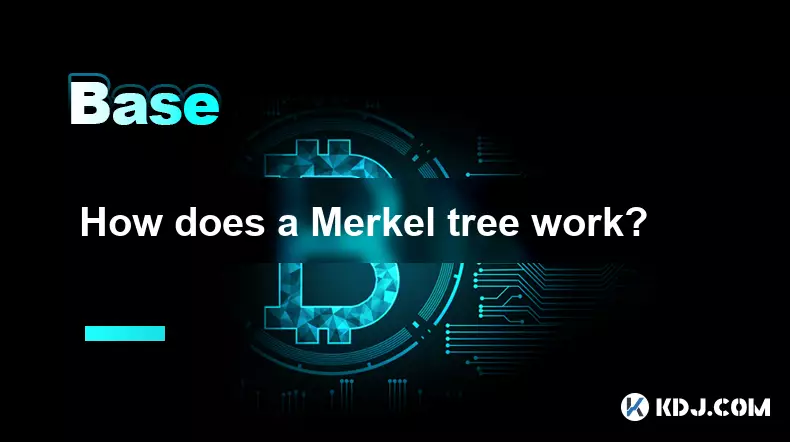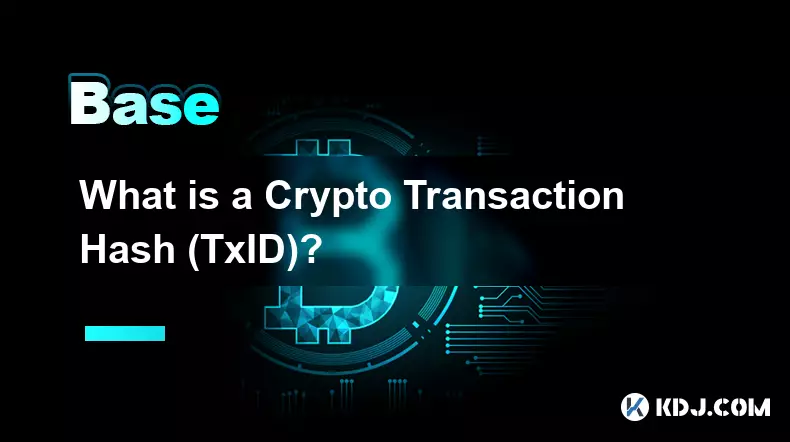-
 Bitcoin
Bitcoin $111100
0.49% -
 Ethereum
Ethereum $4304
0.21% -
 XRP
XRP $2.888
2.36% -
 Tether USDt
Tether USDt $0.9999
-0.03% -
 BNB
BNB $879.1
1.62% -
 Solana
Solana $207.9
2.67% -
 USDC
USDC $0.9998
-0.01% -
 Dogecoin
Dogecoin $0.2320
7.05% -
 TRON
TRON $0.3306
0.59% -
 Cardano
Cardano $0.8407
1.68% -
 Hyperliquid
Hyperliquid $48.50
3.55% -
 Chainlink
Chainlink $22.52
0.46% -
 Ethena USDe
Ethena USDe $1.001
-0.02% -
 Sui
Sui $3.395
0.74% -
 Bitcoin Cash
Bitcoin Cash $602.5
0.82% -
 Stellar
Stellar $0.3645
1.67% -
 Avalanche
Avalanche $24.82
0.93% -
 Hedera
Hedera $0.2211
0.99% -
 UNUS SED LEO
UNUS SED LEO $9.606
0.00% -
 Cronos
Cronos $0.2583
-2.44% -
 Litecoin
Litecoin $113.7
0.82% -
 Toncoin
Toncoin $3.094
0.39% -
 Shiba Inu
Shiba Inu $0.00001254
1.50% -
 Polkadot
Polkadot $4.040
4.96% -
 Uniswap
Uniswap $9.429
0.08% -
 Dai
Dai $0.9999
-0.01% -
 Ethena
Ethena $0.7629
3.04% -
 World Liberty Financial
World Liberty Financial $0.2111
-13.16% -
 Monero
Monero $269.9
0.50% -
 Aave
Aave $300.9
-0.41%
How does a Merkel tree work?
Merkle trees ensure blockchain data integrity by using cryptographic hashes to create a tamper-evident structure where any change alters the Merkle root.
Sep 02, 2025 at 09:54 pm

Understanding the Structure of a Merkle Tree
1. A Merkle tree, also known as a hash tree, is a cryptographic structure used to ensure data integrity across distributed systems, especially in blockchain networks. Each leaf node in the tree represents the cryptographic hash of a data block, typically a transaction in the context of cryptocurrencies. These hashes are generated using secure hashing algorithms like SHA-256.
2. Non-leaf nodes contain the hash of their combined child nodes. For example, if two leaf nodes have hashes H(A) and H(B), their parent node will store H(H(A) + H(B)). This hierarchical hashing continues upward until a single hash remains at the top—the Merkle root.
3. The Merkle root serves as a compact representation of all transactions in a block. Any alteration in a single transaction changes its hash, which cascades up the tree and ultimately changes the Merkle root, making tampering immediately detectable.
4. This structure allows systems to verify whether a specific transaction is included in a block without downloading the entire dataset. Only a small subset of hashes, known as a Merkle proof, is needed to confirm inclusion.
5. In Bitcoin and many other blockchain protocols, Merkle trees are used within each block header to summarize all transactions. This enhances efficiency and security by minimizing the data required for validation.
Efficiency in Data Verification
1. One of the primary advantages of Merkle trees is their ability to support efficient and secure verification of large datasets. Instead of transmitting or storing every transaction, nodes can rely on the Merkle root and a small proof to validate data authenticity.
2. For a block containing thousands of transactions, verifying a single transaction requires only log₂(n) hashes, where n is the number of transactions. This logarithmic scaling makes the process highly efficient even as blockchain networks grow.
3. Lightweight clients, such as mobile wallets, benefit significantly from this design. These clients do not store the full blockchain but can still confirm that a transaction has been included in a block by requesting a Merkle proof from a full node.
4. The verification process involves recalculating the hash path from the transaction up to the root and comparing it with the Merkle root stored in the block header. If they match, the transaction is confirmed as part of the block.
5. This mechanism reduces bandwidth usage and storage requirements, enabling decentralized networks to remain scalable and accessible to a broader range of participants.
Role in Blockchain Security
1. Merkle trees play a critical role in maintaining the immutability of blockchain ledgers. Once a block is mined and its Merkle root is recorded, any attempt to alter a transaction would require recalculating all parent hashes up to the root, which is computationally infeasible without control over the entire network’s consensus mechanism.
2. The design ensures that each block commits to a unique fingerprint of its transactions. This commitment is embedded in the block header, which is itself part of the hashing process for proof-of-work or other consensus algorithms.
3. By enabling compact cryptographic proofs, Merkle trees strengthen trustless verification in decentralized environments. Participants can independently validate transaction inclusion without relying on third parties, reinforcing the peer-to-peer nature of blockchain systems.
4. In cases where multiple transactions are batched into a single block, the Merkle tree ensures that the order and content of transactions are preserved. Any reordering or substitution would produce a different Merkle root, alerting the network to potential fraud.
5. The structure also supports advanced protocols like Simplified Payment Verification (SPV), allowing users to interact securely with the blockchain while minimizing resource consumption.
Frequently Asked Questions
What happens if a Merkle tree has an odd number of leaf nodes?When there is an odd number of transactions, the last leaf node is typically duplicated to form a pair. This ensures the binary tree structure remains balanced and the hashing process can proceed without interruption.
Can two different sets of transactions produce the same Merkle root?Under normal circumstances, this is practically impossible due to the collision-resistant properties of cryptographic hash functions. A different set of transactions would almost certainly produce a different Merkle root.
Are Merkle trees used outside of blockchain?Yes, Merkle trees are employed in various systems requiring data integrity checks, such as distributed file systems, version control systems like Git, and certificate transparency logs.
Disclaimer:info@kdj.com
The information provided is not trading advice. kdj.com does not assume any responsibility for any investments made based on the information provided in this article. Cryptocurrencies are highly volatile and it is highly recommended that you invest with caution after thorough research!
If you believe that the content used on this website infringes your copyright, please contact us immediately (info@kdj.com) and we will delete it promptly.
- BlockchainFX, Bitcoin Hyper, and Little Pepe: Which Presale is the Real Deal?
- 2025-09-08 22:30:12
- Somnia Price Rally: Why This Cryptocurrency Is Surging
- 2025-09-08 22:30:12
- BlockchainFX: The Trading App with 1000x Potential?
- 2025-09-08 22:30:13
- BlockchainFX, Altcoins, and 2025 Growth: A NYC Perspective
- 2025-09-08 22:30:13
- Bitcoin, BlockchainFX Presale, and the Blockchain Revolution: What's Next?
- 2025-09-08 22:35:15
- Justin Sun, Crypto Regulation, and Investment Opportunities: A NYC Perspective
- 2025-09-08 22:35:15
Related knowledge

What is slippage in crypto?
Sep 08,2025 at 08:55pm
Understanding Slippage in Cryptocurrency Trading1. Slippage refers to the difference between the expected price of a trade and the actual price at whi...

How do you buy cryptocurrency?
Sep 08,2025 at 07:54pm
Understanding the Basics of Cryptocurrency Purchases1. To buy cryptocurrency, you must first choose a reliable digital currency exchange. Platforms li...

What is a Crypto Transaction Hash (TxID)?
Sep 07,2025 at 01:18pm
Understanding the Role of a Crypto Transaction Hash1. A crypto transaction hash, often referred to as TxID, is a unique identifier generated when a tr...

What is On-Chain and Off-Chain Data?
Sep 07,2025 at 04:55pm
Understanding On-Chain Data1. On-chain data refers to all information that is recorded directly on a blockchain. Every transaction, smart contract exe...

What is a Testnet vs. a Mainnet?
Sep 08,2025 at 05:55am
Understanding the Core Differences Between Testnet and Mainnet1. A Testnet is a parallel blockchain network used exclusively for testing purposes. Dev...

How to do Your Own Research (DYOR) in Crypto?
Sep 08,2025 at 08:00am
Understanding the Foundations of Crypto Projects1. Every cryptocurrency project starts with a foundational whitepaper. This document outlines the tech...

What is slippage in crypto?
Sep 08,2025 at 08:55pm
Understanding Slippage in Cryptocurrency Trading1. Slippage refers to the difference between the expected price of a trade and the actual price at whi...

How do you buy cryptocurrency?
Sep 08,2025 at 07:54pm
Understanding the Basics of Cryptocurrency Purchases1. To buy cryptocurrency, you must first choose a reliable digital currency exchange. Platforms li...

What is a Crypto Transaction Hash (TxID)?
Sep 07,2025 at 01:18pm
Understanding the Role of a Crypto Transaction Hash1. A crypto transaction hash, often referred to as TxID, is a unique identifier generated when a tr...

What is On-Chain and Off-Chain Data?
Sep 07,2025 at 04:55pm
Understanding On-Chain Data1. On-chain data refers to all information that is recorded directly on a blockchain. Every transaction, smart contract exe...

What is a Testnet vs. a Mainnet?
Sep 08,2025 at 05:55am
Understanding the Core Differences Between Testnet and Mainnet1. A Testnet is a parallel blockchain network used exclusively for testing purposes. Dev...

How to do Your Own Research (DYOR) in Crypto?
Sep 08,2025 at 08:00am
Understanding the Foundations of Crypto Projects1. Every cryptocurrency project starts with a foundational whitepaper. This document outlines the tech...
See all articles

























![[Pycoin] PI Coin -US President (Trump) Declaration ?? !! 'US' runs first. / Paikoin mining speed acceleration [Pycoin] PI Coin -US President (Trump) Declaration ?? !! 'US' runs first. / Paikoin mining speed acceleration](/uploads/2025/09/08/cryptocurrencies-news/videos/pycoin-pi-coin-president-trump-declaration-runs-paikoin-mining-speed-acceleration/68bed38c01e7a_image_500_375.webp)































































